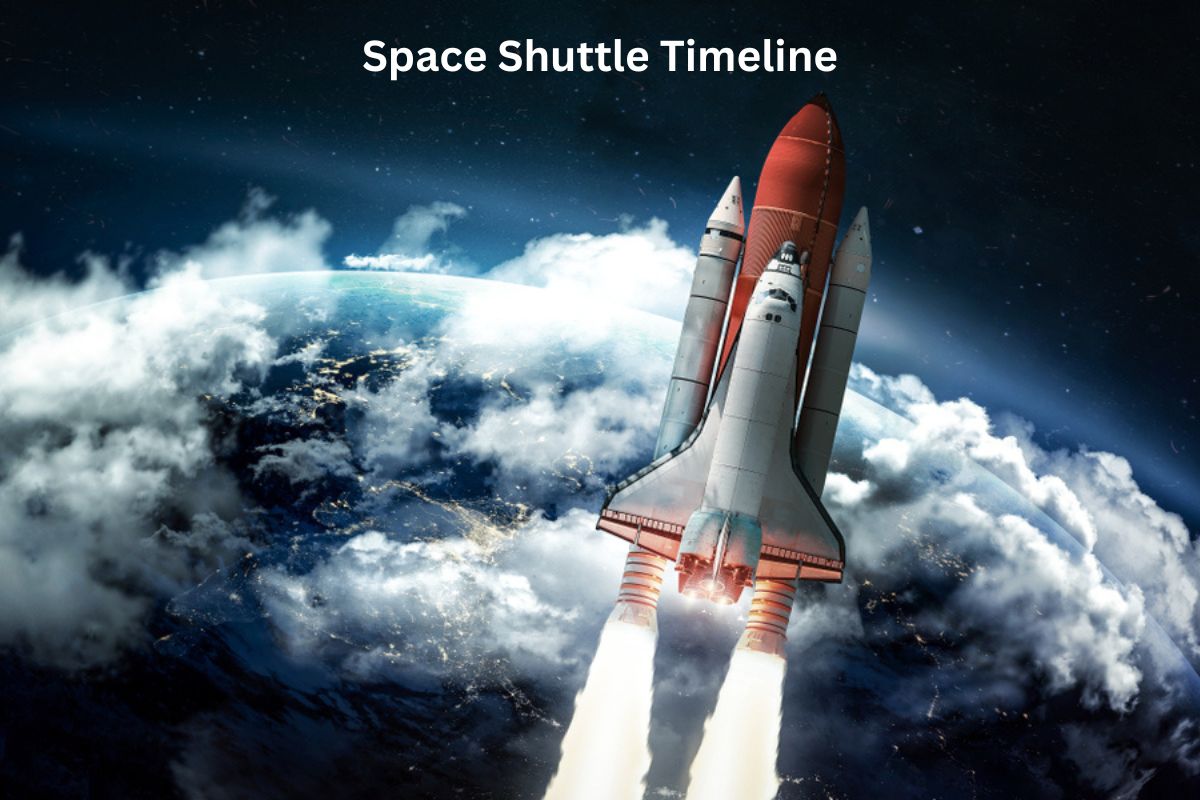The Space Shuttle program, operated by NASA, was a remarkable chapter in the history of human space exploration. Spanning over three decades, from 1981 to 2011, it featured a fleet of reusable orbiters that revolutionized our ability to access and work in space.
This brief timeline highlights key events and missions within the Space Shuttle program, from its inception to its iconic missions, achievements, and its eventual retirement, leaving a lasting legacy in the field of space exploration.
| Year | Event or Mission |
|---|---|
| 1972 | NASA announces plans for the Space Shuttle program. |
| 1976 | The first Space Shuttle, Enterprise, conducts a series of atmospheric test flights without going into space. |
| 1981 | Space Shuttle Columbia becomes the first orbiter to go into space on STS-1, the program’s inaugural flight, with astronauts John Young and Robert Crippen. |
| 1982 | Challenger, the second operational Space Shuttle, makes its maiden flight on STS-6. |
| 1983 | Space Shuttle Challenger carries the first American female astronaut, Sally Ride, into space on STS-7. |
| 1984 | Space Shuttle Discovery makes its first flight on STS-41-D. |
| 1985 | Atlantis joins the Space Shuttle fleet, conducting its first mission on STS-51-J. |
| 1986 | Tragedy strikes as Challenger disintegrates 73 seconds after liftoff on STS-51-L, resulting in the loss of seven astronauts. |
| 1988 | The Space Shuttle program returns to flight with the launch of Discovery on STS-26. |
| 1989 | Space Shuttle Atlantis launches the Magellan spacecraft to Venus on STS-30. |
| 1990 | Discovery deploys the Hubble Space Telescope on STS-31. |
| 1992 | Endeavour, the fifth and final Space Shuttle orbiter, joins the fleet and conducts its first mission on STS-49. |
| 1993 | The Space Shuttle program helps to assemble the International Space Station (ISS) with the launch of the Unity module on STS-88. |
| 1995 | Space Shuttle Endeavour conducts the first shuttle mission to dock with the Russian space station Mir on STS-63. |
| 1998 | The Space Shuttle Discovery launches the first American component, the Unity module, to the ISS on STS-88. |
| 2000 | Endeavour delivers the Zvezda Service Module to the ISS, an important Russian contribution, on STS-106. |
| 2003 | Tragedy strikes again as Space Shuttle Columbia disintegrates upon re-entry on STS-107, resulting in the loss of seven astronauts. |
| 2005 | The Space Shuttle program resumes with the launch of Discovery on STS-114, following safety improvements. |
| 2011 | Atlantis completes the final Space Shuttle mission, STS-135, marking the end of the Space Shuttle program. |
| 2012 | The Space Shuttle orbiters are retired and distributed to museums across the United States. |
Timeline of the Space Shuttle
1972: NASA announces plans for the Space Shuttle program
In 1972, NASA officially unveiled its ambitious plans for the Space Shuttle program. This marked a significant shift in human spaceflight as it aimed to create a reusable spacecraft that could carry astronauts and cargo into low Earth orbit and return safely to be launched again.
The Space Shuttle was intended to be a workhorse for various missions, including deploying satellites, conducting scientific research, and building and servicing space stations.
Also Read: Facts About the Space Shuttle
The announcement of the program brought hope and excitement to the space community and the general public. The Space Shuttle was seen as a way to make space access more routine and cost-effective compared to the disposable spacecraft of previous missions.
It was expected to revolutionize space exploration and open up new possibilities for scientific research and commercial activities in space.
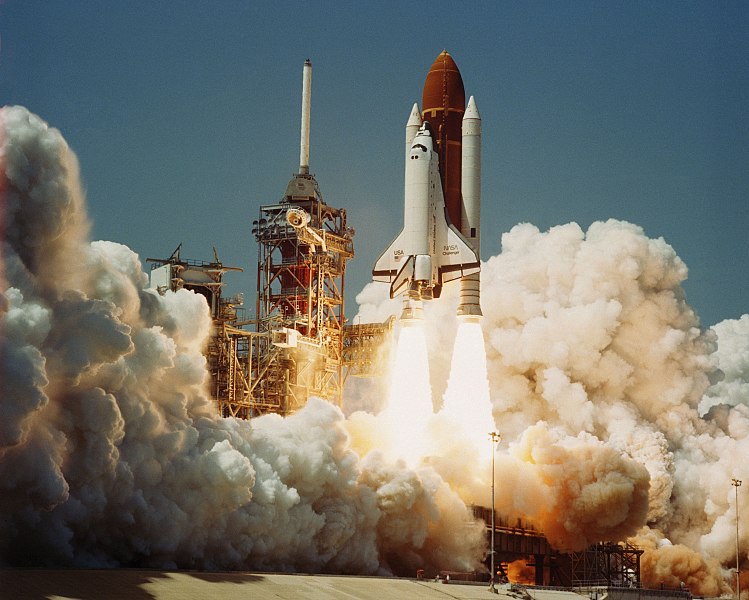
1976: The first Space Shuttle, Enterprise, conducts a series of atmospheric test flights without going into space
In 1976, the Space Shuttle Enterprise made its debut. However, it’s important to note that Enterprise was a prototype and not a fully operational shuttle for space missions. Its purpose was to conduct a series of atmospheric test flights to evaluate the shuttle’s aerodynamic and handling characteristics.
Also Read: International Space Station Facts
Enterprise was carried aloft on the back of a specially modified Boeing 747 aircraft and released in mid-air to glide back to Earth, allowing NASA to gather critical data on its flight performance.
These test flights were crucial for fine-tuning the design and ensuring that the Space Shuttle could safely re-enter the Earth’s atmosphere and land like an airplane after a mission.
Enterprise’s successful test flights paved the way for the development and eventual launch of the operational Space Shuttles.
1981: Space Shuttle Columbia becomes the first orbiter to go into space on STS-1
On April 12, 1981, the Space Shuttle era officially began with the launch of Space Shuttle Columbia on mission STS-1. This historic flight marked the first time a reusable spacecraft was used for a space mission.
Astronauts John Young and Robert Crippen were at the controls of Columbia as it lifted off from Kennedy Space Center in Florida.
STS-1 was a two-day mission that orbited the Earth 36 times before Columbia successfully landed at Edwards Air Force Base in California on April 14, 1981. The mission demonstrated the Space Shuttle’s capabilities, including its ability to transport astronauts and payloads to orbit and return them safely to Earth.
The success of STS-1 was a major milestone in space exploration, proving that the Space Shuttle could perform as intended and paving the way for a series of subsequent missions that would help shape the future of human spaceflight.
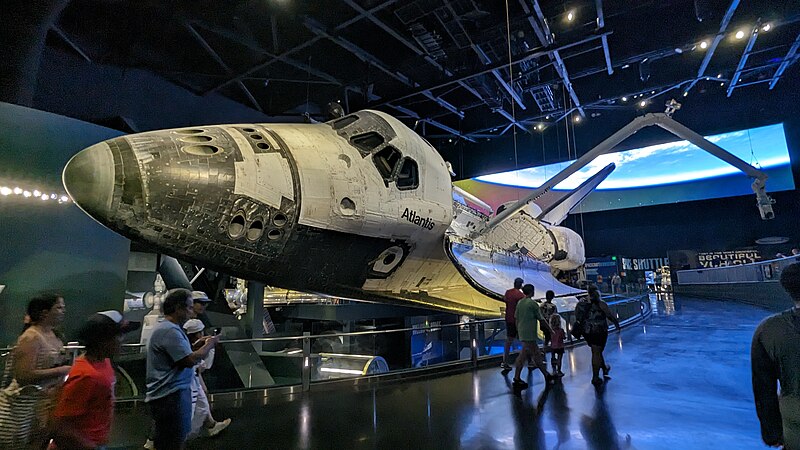
1982: Challenger, the second operational Space Shuttle, makes its maiden flight on STS-6
In April 1983, the Space Shuttle Challenger made its debut with the launch of mission STS-6. Challenger was the second operational orbiter in the Space Shuttle fleet and was tasked with conducting various missions, including deploying satellites and conducting scientific experiments.
STS-6, commanded by astronaut Paul Weitz, marked the first flight of Challenger and the program’s first operational deployment of a Tracking and Data Relay Satellite (TDRS). TDRS was an important part of NASA’s communication infrastructure, enhancing communication between ground control and space shuttles.
The mission also included spacewalks to test the feasibility of repairing satellites in orbit, showcasing the versatility of the Space Shuttle.
1983: Space Shuttle Challenger carries the first American female astronaut, Sally Ride, into space on STS-7
On June 18, 1983, Space Shuttle Challenger made history by carrying the first American woman into space, Dr. Sally Ride. She was a physicist and became the third woman in space worldwide. STS-7 was her first spaceflight and marked a significant milestone in the history of women in space exploration.
During the mission, Sally Ride and her fellow crew members conducted various experiments, including deploying communication satellites and studying Earth’s atmosphere. Her presence on the mission inspired countless women and girls to pursue careers in science, technology, engineering, and mathematics (STEM) fields.
Sally Ride’s groundbreaking achievements continued to inspire future generations of astronauts and scientists, and her contributions to space exploration remain a testament to the inclusivity and diversity of the Space Shuttle program.
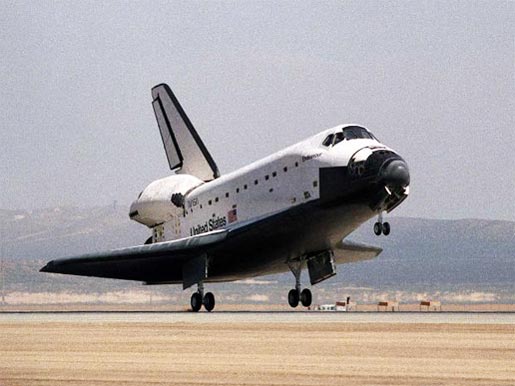
1984: Space Shuttle Discovery makes its first flight on STS-41-D
Space Shuttle Discovery, the third orbiter in NASA’s Space Shuttle fleet, took its inaugural flight on August 30, 1984, as part of mission STS-41-D. The flight was commanded by astronaut Henry W. Hartsfield Jr. and included several significant accomplishments.
During STS-41-D, Discovery deployed three communication satellites, retrieved two malfunctioning satellites for repair and return to Earth, and conducted various scientific experiments.
The mission highlighted the Space Shuttle’s versatility, as it demonstrated the ability to not only launch payloads into space but also retrieve and repair satellites, a capability that was vital for maintaining and servicing critical orbital infrastructure.
The success of Space Shuttle Discovery’s first mission further solidified the importance of the Space Shuttle program in supporting a wide range of missions and establishing a foundation for the future of space exploration.
1985: Atlantis joins the Space Shuttle fleet, conducting its first mission on STS-51-J
In October 1985, Space Shuttle Atlantis became the fourth orbiter in NASA’s Space Shuttle fleet. Atlantis was named after the research vessel RV Atlantis used for oceanography and was assigned to a variety of missions over its operational history.
Atlantis’ maiden flight, designated STS-51-J, marked its entry into service. The mission’s primary objective was to deploy two communication satellites into orbit, further expanding the capabilities of global telecommunications.
The successful deployment of these satellites demonstrated the Space Shuttle’s role in supporting commercial satellite operations.
1986: Tragedy strikes as Challenger disintegrates 73 seconds after liftoff on STS-51-L, resulting in the loss of seven astronauts
On January 28, 1986, the Space Shuttle program faced its most tragic moment when Space Shuttle Challenger (OV-099) disintegrated just 73 seconds after liftoff during mission STS-51-L.
The disaster resulted in the loss of all seven astronauts on board, including Christa McAuliffe, who was selected to be the first private citizen and teacher in space.
The Challenger disaster was attributed to the failure of an O-ring seal in one of the solid rocket boosters, which allowed hot gases to escape and damage the external fuel tank. The tragedy led to a suspension of the Space Shuttle program and a thorough investigation into the cause of the accident.
The Challenger disaster had a profound impact on the Space Shuttle program, resulting in design changes, safety improvements, and a reassessment of launch protocols to prevent similar incidents from occurring in the future. It also prompted a reevaluation of the risks associated with human spaceflight.
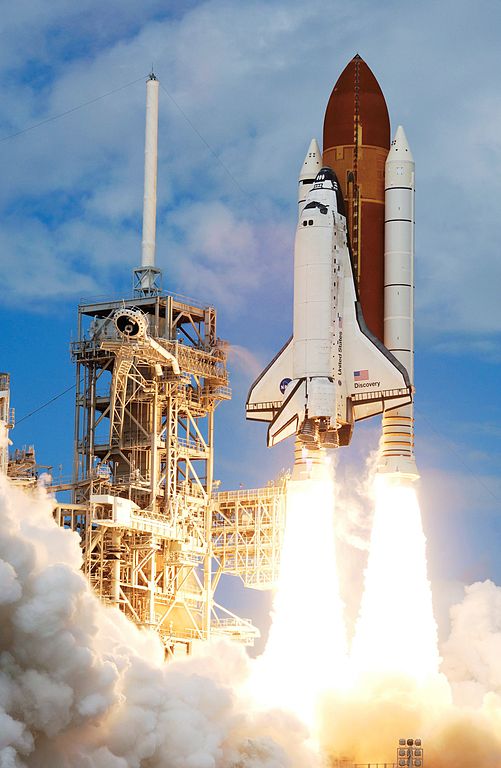
1988: The Space Shuttle program returns to flight with the launch of Discovery on STS-26
After a hiatus of over two years following the Challenger disaster, the Space Shuttle program resumed with the launch of Space Shuttle Discovery on mission STS-26 in September 1988. The mission was designated as STS-26R, with “R” symbolizing “Return to Flight.”
STS-26 marked a crucial milestone in the program’s recovery and demonstrated NASA’s commitment to improving safety. The mission carried a Tracking and Data Relay Satellite (TDRS) into orbit, continuing the expansion of the TDRS communication network, and performed various scientific experiments.
The successful return to flight was a testament to NASA’s dedication to addressing the issues that led to the Challenger tragedy and reaffirmed the importance of the Space Shuttle program in supporting a wide range of missions.
1989: Space Shuttle Atlantis launches the Magellan spacecraft to Venus on STS-30
Space Shuttle Atlantis embarked on mission STS-30 in May 1989, marking its second flight. This mission had a unique objective: to launch the Magellan spacecraft on a journey to Venus. Magellan was an interplanetary probe designed to study Venus’ surface and map the planet using radar.
Atlantis deployed Magellan into its trajectory, and the probe eventually arrived at Venus, where it conducted a highly successful mapping mission, revealing the topography and geology of Earth’s neighboring planet. The data collected by Magellan significantly expanded our understanding of Venus and its mysterious cloud-covered surface.
STS-30 showcased the Space Shuttle’s versatility in supporting interplanetary exploration by launching planetary missions like Magellan while also demonstrating its capability to deploy and retrieve payloads for a variety of scientific purposes.
1990: Discovery deploys the Hubble Space Telescope on STS-31
In April 1990, Space Shuttle Discovery undertook a landmark mission, STS-31, in which it deployed the Hubble Space Telescope (HST) into orbit.
The Hubble Space Telescope was a revolutionary observatory that allowed astronomers to capture breathtaking images and conduct groundbreaking research in space.
After deploying Hubble, the telescope’s first images revealed that it had a flaw in its primary mirror, causing blurred images. This issue was later corrected during a servicing mission in 1993, demonstrating the Space Shuttle’s ability to service and upgrade critical space assets.
Hubble has since become one of the most important astronomical observatories in history, providing valuable insights into the universe’s origins, evolution, and mysteries.
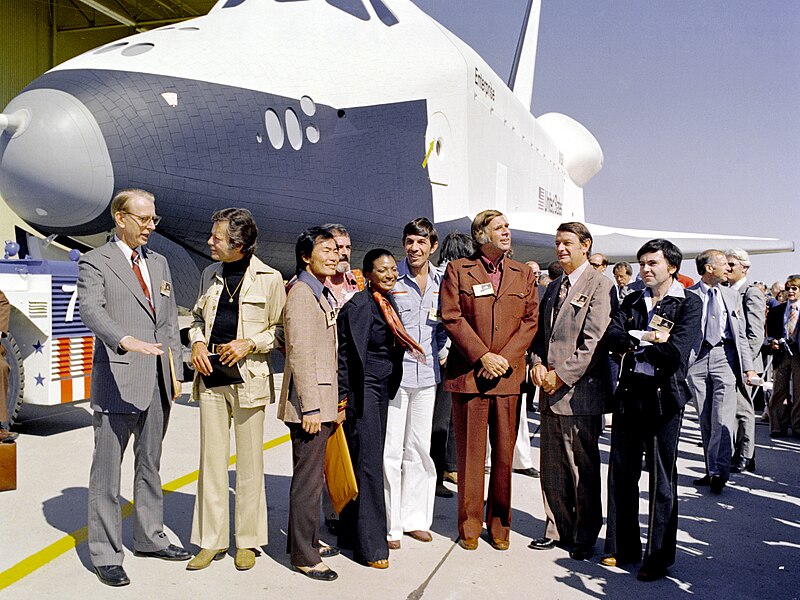
1992: Endeavour, the fifth and final Space Shuttle orbiter, joins the fleet and conducts its first mission on STS-49
Space Shuttle Endeavour, named after the ship commanded by Captain James Cook during his 18th-century Pacific exploration, was the fifth and final orbiter to be added to NASA’s Space Shuttle fleet. Endeavour’s first mission, STS-49, took place in May 1992.
STS-49 was a challenging mission that aimed to capture, repair, and redeploy the Intelsat VI satellite, which had failed to reach its intended orbit.
During the mission, astronauts conducted a series of spacewalks to rendezvous with the stranded satellite, attach a new perigee kick motor, and release it into its proper geostationary orbit.
1993: The Space Shuttle program helps to assemble the International Space Station (ISS) with the launch of the Unity module on STS-88
The construction of the International Space Station (ISS) began with the launch of the Unity connecting module aboard Space Shuttle Endeavour during mission STS-88 in December 1998. Unity was the first American component of the ISS, and it was connected to the Russian Zarya module, which had been launched earlier.
STS-88 marked the start of a series of assembly missions where the Space Shuttle played a critical role in transporting and assembling various components of the ISS. Over the years, the Space Shuttle delivered modules, solar arrays, and other equipment, facilitating the construction of this multinational space laboratory.
The ISS has since become a symbol of international cooperation in space exploration and continues to host scientific research, technology development, and international collaboration in low Earth orbit.
1995: Space Shuttle Endeavour conducts the first shuttle mission to dock with the Russian space station Mir on STS-63
In February 1995, Space Shuttle Endeavour conducted mission STS-63, which featured a historic event – the first time a Space Shuttle docked with the Russian space station Mir. During the mission, Endeavour approached Mir, demonstrating rendezvous and docking techniques that would later be used with the ISS.
Astronaut Eileen Collins became the first female Space Shuttle pilot during STS-63. The mission also included a spacewalk to test and evaluate tools and procedures for future space station assembly and repair.
This mission marked a significant step toward international cooperation in space, foreshadowing future partnerships between NASA and other space agencies, including the Russian space agency (now Roscosmos), in building and operating the ISS.
1998: The Space Shuttle Discovery launches the first American component, the Unity module, to the ISS on STS-88
The construction of the ISS continued with mission STS-88, conducted by Space Shuttle Discovery in December 1998. During this mission, the Space Shuttle delivered the Unity connecting module, which was then connected to the Russian Zarya module, forming the first building block of the International Space Station.
The successful assembly of these components marked a significant milestone in the ISS program, and it demonstrated the Space Shuttle’s crucial role in transporting and connecting the various modules and components that would eventually form the completed space station.
The ISS has since become a symbol of international collaboration, hosting astronauts from different countries and serving as a platform for scientific research and experiments conducted in the unique environment of space.
2000: Endeavour delivers the Zvezda Service Module to the ISS, an important Russian contribution, on STS-106
Space Shuttle Endeavour played a crucial role in the assembly of the International Space Station (ISS) during mission STS-106 in September 2000. The primary objective of this mission was to deliver the Zvezda Service Module to the ISS.
Zvezda, a Russian module, served as the early living quarters and control center for the space station. Its delivery marked an essential step in the ongoing construction of the ISS, as it provided the necessary infrastructure for long-duration human habitation and operations in space.
The successful installation of Zvezda strengthened the collaboration between NASA and the Russian space agency (Roscosmos) in building and operating the ISS.
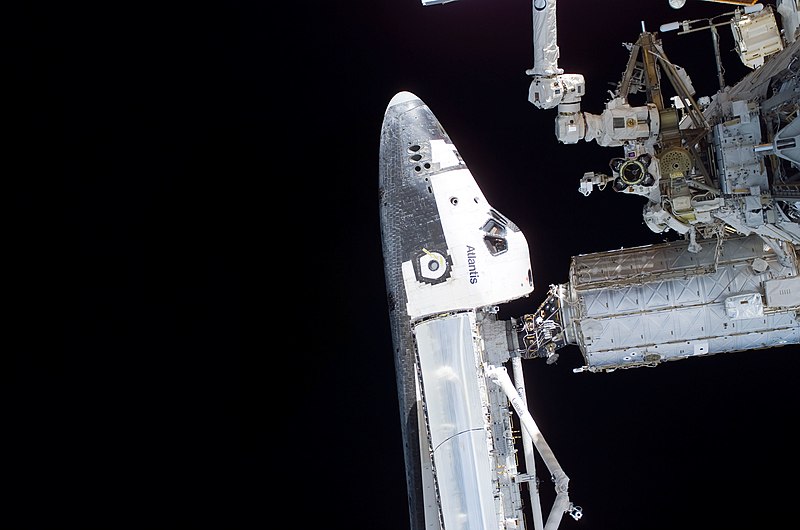
2003: Tragedy strikes again as Space Shuttle Columbia disintegrates upon re-entry on STS-107, resulting in the loss of seven astronauts
On February 1, 2003, the Space Shuttle program faced another devastating tragedy when Space Shuttle Columbia (OV-102) disintegrated upon re-entry during mission STS-107. The disaster resulted in the loss of all seven astronauts on board and included crew members from the United States, Israel, and India.
The tragedy was caused by damage to the shuttle’s thermal protection system, specifically the reinforced carbon-carbon panels on its left wing, which were struck by a piece of foam insulation during launch. This damage allowed superheated gases to enter the wing during re-entry, leading to the loss of the spacecraft.
The Columbia disaster led to another suspension of the Space Shuttle program, a thorough investigation, and significant safety improvements, including enhanced debris mitigation measures.
It highlighted the inherent risks of human spaceflight and underscored the need for continuous vigilance and safety enhancements in space exploration.
2005: The Space Shuttle program resumes with the launch of Discovery on STS-114, following safety improvements
After the Columbia disaster, NASA took extensive measures to enhance the safety and reliability of the Space Shuttle fleet. In July 2005, Space Shuttle Discovery returned the program to flight with mission STS-114. This mission was designated as the “Return to Flight” mission (STS-114R) and was led by Commander Eileen Collins.
STS-114 was a test flight focused on evaluating the new safety measures, inspecting the shuttle’s thermal protection system during in-orbit operations, and testing repair techniques for the shuttle’s heat shield. It was a critical step in rebuilding confidence in the shuttle program and ensuring that the lessons learned from previous accidents were applied.
The successful resumption of shuttle flights marked a significant milestone in the history of the program and demonstrated NASA’s commitment to the safe operation of the Space Shuttle fleet.

2011: Atlantis completes the final Space Shuttle mission, STS-135, marking the end of the Space Shuttle program
On July 8, 2011, Space Shuttle Atlantis launched on its final mission, STS-135, marking the end of the Space Shuttle program. The mission delivered supplies and equipment to the International Space Station (ISS) and represented the culmination of over 30 years of Space Shuttle operations.
STS-135 was commanded by astronaut Chris Ferguson and included crew members Doug Hurley, Sandy Magnus, and Rex Walheim. After completing its mission to the ISS, Atlantis safely returned to Earth on July 21, 2011, marking the conclusion of the Space Shuttle era.
The retirement of the Space Shuttle fleet marked a transition in NASA’s human spaceflight program, with a shift toward developing new spacecraft and exploration missions beyond low Earth orbit, including plans for missions to the Moon and Mars.
2012: The Space Shuttle orbiters are retired and distributed to museums across the United States.
Following the retirement of the Space Shuttle program, NASA decommissioned the remaining Space Shuttle orbiters: Discovery, Atlantis, and Endeavour.
These iconic spacecraft were distributed to museums across the United States to inspire and educate the public about space exploration.
- Discovery was transferred to the Smithsonian National Air and Space Museum’s Steven F. Udvar-Hazy Center in Virginia.
- Atlantis is on display at the Kennedy Space Center Visitor Complex in Florida.
- Endeavour is exhibited at the California Science Center in Los Angeles.
These retired orbiters serve as a testament to the historic achievements of the Space Shuttle program and continue to engage and inspire visitors with their rich legacy in human spaceflight.
